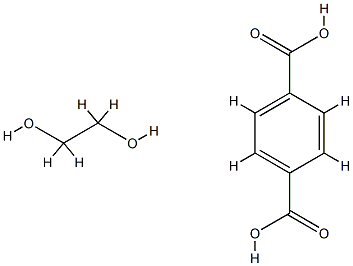CHEMICAL AND PHYSICAL PROPERTIES
| Physical Description | NKRA |
|---|---|
| Color/Form | Offered as oriented film or fiber |
| Melting Point | 265 °C |
| Density | 1.38 |
| Decomposition | When heated to decomposition it emits acrid smoke and irritating fumes. |
| Other Experimental Properties | Tenacity is 2.2-4 g/denier as staple and up to 9.0 g/denier as continuous filament. |
| Chemical Classes | Plastics & Rubber -> Polymers |
COMPUTED DESCRIPTORS
| Molecular Weight | 228.20 g/mol |
|---|---|
| Hydrogen Bond Donor Count | 4 |
| Hydrogen Bond Acceptor Count | 6 |
| Rotatable Bond Count | 3 |
| Exact Mass | 228.06338810 g/mol |
| Monoisotopic Mass | 228.06338810 g/mol |
| Topological Polar Surface Area | 115 Ų |
| Heavy Atom Count | 16 |
| Formal Charge | 0 |
| Complexity | 175 |
| Isotope Atom Count | 0 |
| Defined Atom Stereocenter Count | 0 |
| Undefined Atom Stereocenter Count | 0 |
| Defined Bond Stereocenter Count | 0 |
| Undefined Bond Stereocenter Count | 0 |
| Covalently-Bonded Unit Count | 2 |
| Compound Is Canonicalized | Yes |
PRODUCT INTRODUCTION
description
Polyethylene terephthalate (PET or PETE), is a thermoplastic polymer resin of the polyester family and is used in synthetic fibers; beverage, food and other liquid containers; thermoforming applications; and engineering resins often in combination with glass fiber. The majority of the world's PET production is for synthetic fibers (in excess of 60%) with bottle production accounting for around 30% of global demand. Some of the trade names of PET products are Dacron, Diolen, Tergal, Terylene, and Trevira fibers, Cleartuf, Eastman PET and Polyclear bottle resins, Hostaphan, Melinex, and Mylar films, and Arnite, Ertalyte, Impet, Rynite and Valox injection molding resins. PET consists of polymerized units of the monomer ethylene terephthalate, with repeating C10H8O4 units. PET is commonly recycled, and has the number "1" as its recycling symbol. (L1907)

